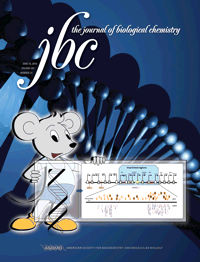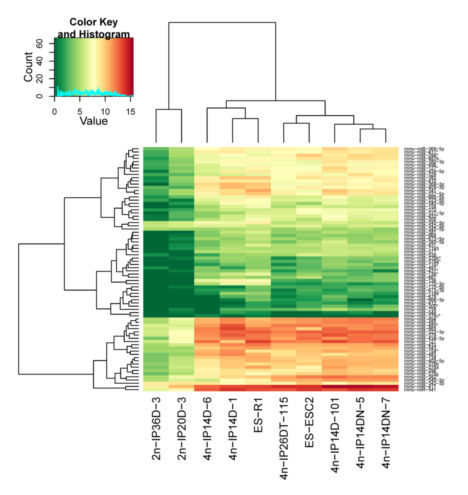The cover story of June 18th 2010 issue of Journal of Biological Chemistry reported the discovery of a molecular marker which can be used to determine the pluripotent status of mouse induced pluripotent stem (iPS) cells. The discovery was achieved through the joint efforts of two CAS research groups, led by Prof. Qi Zhou at Institute of Zoology and Prof. Xiu-Jie Wang at Institute of Genetics and Developmental Biology. It was considered to have great implications on future stem cell basic and application researches.
Embryonic stem (ES) cells and iPS cells have been one of the hottest areas in life science research in recent years, and have shown important research and clinical application values. In 2009, Prof. Qi Zhou’s group demonstrated that iPS cells have the same pluripotency as embryonic stem cells by the creation of the world’s first iPS mouse ‘tiny’. During that process, they also found that the efficiency of obtaining fully reprogrammed iPS cells was extremely low, most iPS cells were not fully reprogrammed and were incapable of producing full-term offspring or gave birth to offspring with developmental defects. Due to the ethical issues, the pluripotency of human iPS cells could not be tested by developmental criteria, which is a great obstacle for the application of human iPS cells in regenerative medicine. Therefore, how to access the degree of pluripotency of iPS cells is an essential question in both the basic and clinical stem cell researches.
To address the above question, Prof. Qi Zhou teamed up with Prof. Xiu-Jie Wang to study the expression profiles of genes, small RNAs and proteins of multiple mice ES and iPS cell lines with different developmental potentials. A genomic region encoding several genes and a large cluster of microRNAs in the mouse genome was identified, which exhibited high expression in fully pluripotent embryonic stem cells and iPS cells, but only had very limited or no expression in partially pluripotent iPS cells, and the degree of activation of this region was positively correlated with the degree of pluripotency of iPS cells, as proved by multiple examined cell lines. These results indicated that the activation of this genomic region can serve as a marker to evaluate the pluripotency status of mouse stem cells and iPS cells. As coding genes and non-coding RNAs encoded in this genomic region are highly conserved in mammals, it will greatly promote the study and clinical application of iPS cells if the same expression pattern holds for human ES and iPS cells.
About two weeks after the online publication of this work on JBC, an American research team led by Dr. Konrad Hochedlinger online published a similar work in Nature. Similar observation was reported in their work, further supported the conclusions of this work and their importance.

Cover of Journal of Biological Chemistry, issue 285, published on June 18th, 2010

iPS cell lines can be classified according to their degree of pluripotency by the expression of a miRNA cluster located within the identified mouse genomic region.


